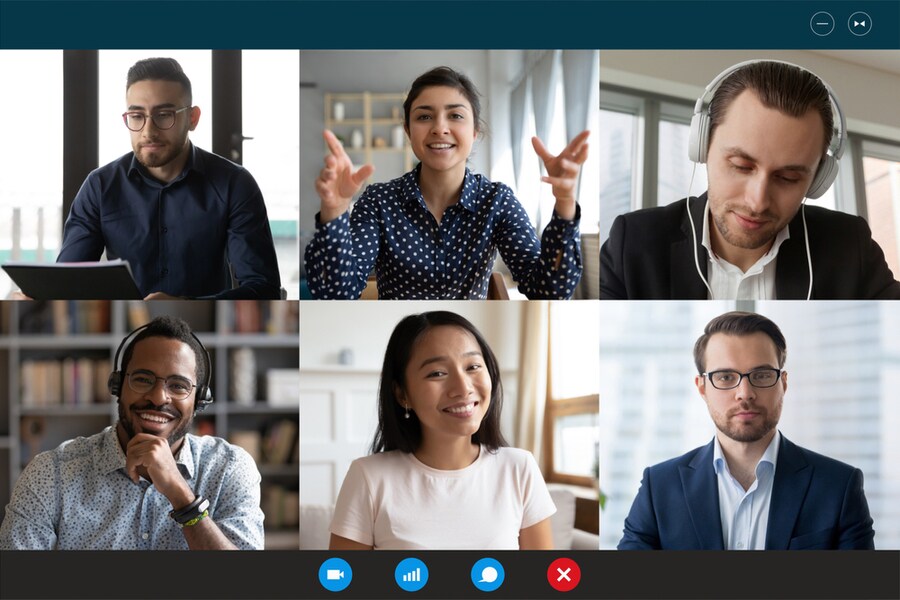
How to sell in a virtual world
From a "pre-flight checklist" to handwritten thank-you notes, here's how to sell both your products and your ideas via video.
 Image: Shutterstock
Image: Shutterstock Editor’s note: This is part of a series of articles based on Kellogg Executive Education webinars focused on COVID-19 and crisis management.
In sales, face-to-face interactions have long been the gold standard for building relationships and closing deals. But, as with so much of business today, the pandemic has upended that routine.
So how do people looking to sell something—be it their ideas in a meeting or their company’s products and services—survive, even excel in our newly virtual world? Craig Wortmann, a clinical professor of innovation and entrepreneurship at Kellogg, shared his advice for making sales meetings lively and productive during a recent webinar from Kellogg Executive Education.
“If we treat this as a slog,” he says, “that’s going to show up in our behaviors.”
To start, you’ll need to prepare for your virtual meetings differently.
Wortmann, who is also the Executive Director of the Kellogg Sales Institute, refers to what he calls his “pre-flight checklist.” This includes, for example, reminders to check his mic, camera angle, and background, to test that his slides are advancing, and to make sure he’s assigned a co-host who has the presentation on their computer, too. He also ensures that there’s a conference-call line ready just in case the video technology fails in the moment.
And because even minor technology hiccups can eat into a presentation’s allotted time, he encourages people to cut 20 percent out of what they intend to cover. Worst case scenario, you spend that time walking people through their Zoom settings; best case scenario, you have more time left over at the end for questions and conversation.
Additionally, before meeting with new groups of people, Wortmann sometimes records a one-minute video to introduce himself and mention a few interesting items he’s looking forward to discussing. Then he sends this out to the group a day in advance.
Wortmann recommends that during virtual sales meetings everyone stand while on camera. This will energize you and convey that to participants. “That energy is infectious,” he says.
Just as with in-person meetings, he encourages speakers to use simple, compelling visuals to convey ideas as opposed to dense slides filled with data. But, he says, there’s no shame in having all that data on a second computer screen off to the side that you can look at as needed.
After a meeting, Wortmann says that people need to ask themselves, “how might we continue to impact people even after this thing has ended?” This is why follow-through is so crucial.
Wortmann has long been a proponent of the handwritten thank-you note. But, he says, they’re even more useful today.
“It’s a tactile, physical touch in a virtual world,” he says. “What could be better than that?”
To rise even further above the crowd, Wortmann says to make your follow-up as “bespoke” as possible. This might mean including a small gift that relates to something the other person mentioned in conversation. Or send an article you think they’d like, along with a post-it that summarizes its key points so they can simply skim if they want.
“You are meaningful, and you are memorable, and you need to demonstrate that,” he says of the goal of these notes.
The virtual world has made it a bit trickier to send thank you notes, he acknowledges, since many people aren’t in the office to get mail. But Wortmann recommends addressing this directly. At the end of a meeting, say something like, “We love writing thank-you notes, and in fact it’s one of our core disciplines. But, we also realize things have changed in this new era. So would it be appropriate to get your home address or should I send my note to your office?”
He says that “99.9 percent of the time, people say, ‘no problem,’” and give their home address.
If you are worried that you did not shine during a meeting, your follow-up could be a message or voicemail that conveys that. You can say, “I’ve been reflecting on something I said and it wasn’t quite right. Could I have another go at that?” The answer might be “no,” and that’s OK. But you have little to lose, and you stand to gain a stronger and more trusting relationship with that other person.
You can watch the full webinar here and see previous articles from this series here.
[This article has been republished, with permission, from Kellogg Insight, the faculty research & ideas magazine of Kellogg School of Management at Northwestern University]




